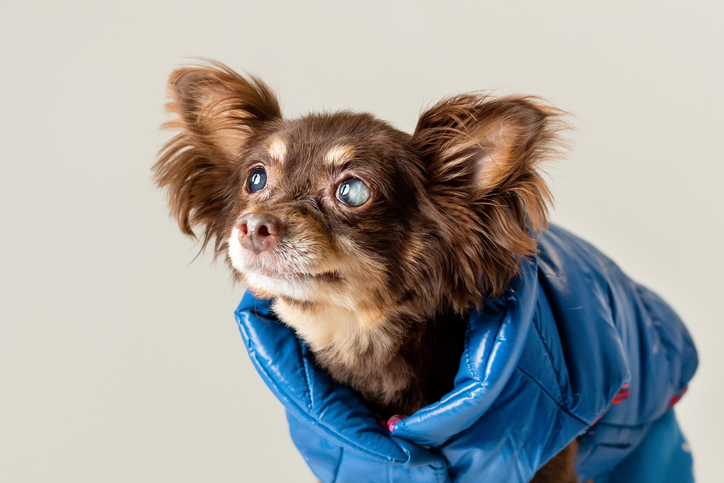Whether walking the dog in the park or settling in for movie night, clear vision is key for you and your four‑legged friend. While people can tell us when their vision gets cloudy, our canine companions show it through hesitancy, bumping into furniture, or simply slowing down. In this playful yet informative guide, we’ll explore what dog and human cataracts have in common, how they differ, and why you and your pup deserve a comprehensive eye exam.
What Exactly Is a Cataract?

A cataract forms when the natural lens inside the eye becomes cloudy, blocking or scattering light and leading to blurred vision. In humans and dogs, this clouding develops gradually, often due to age or genetics, affecting everyday activities and quality of life.
Striking Similarities
- Progressive Lens Clouding—In both species, the lens proteins break down over time, causing the lens to turn opaque.
- Age & Genetics – Older adults (and senior dogs) are most at risk, though hereditary factors can cause early‑onset cataracts in both people and pups.
- Impact on Daily Life – Cataracts can curb confidence and mobility if you need brighter lights and large‑print books, or your dog hesitates on stairs.
Key Differences
How do cataracts in dogs differ from humans?
| Aspect | Humans | Dogs |
| Symptom Reporting | Can describe glare, halos, or blurriness | May appear clumsy, less playful, or fearful in low light |
| Diagnosis & Exams | Eye chart tests, slit‑lamp exams, and advanced imaging | Veterinary eye exam, and an ultrasound if the lens blocks light completely |
| Treatment Options | Cataract removal + premium IOL implants (monofocal, toric, multifocal) | Surgical lens removal; typically monofocal implants if indicated |
| Recovery & Aftercare | Rapid outpatient recovery; tailored follow‑up with ophthalmologist | 1–2 week recovery; muzzle, limited activity, veterinary check‑ups |
“Natural” Remedies Will Cure Cataracts
You may see castor oil drops or “miracle” supplements touted online. Still, no eye exercise or home remedy can reverse the protein breakdown inside the lens.

Real Solution:
- Humans: Professionally measured prescriptions, regular monitoring, and, when ready, advanced cataract surgery with premium lenses.
- Dogs: Veterinary‑performed cataract surgery, possible lens implants, plus careful post‑op care to restore vision.
Real‑World Care Plans
- Comprehensive Exams – Annual eye checks catch cataracts early, when less invasive treatments are possible.
- Treatment Discussions – Your eye doctor (or veterinarian) will review options: glasses/contacts vs. lens surgery for people; surgery vs. medical management for dogs.
- Advanced Interventions – Premium IOLs in people; safe, proven surgical techniques in dogs—both designed to maximize post‑op clarity.
“Catching cataracts early lets us plan a custom solution,” says Dr. Jason Kanarish of Phoenix Mountain Hospital. “Like humans, dogs thrive when we intervene before the lens becomes fully opaque.”
Take Action for Two Sets of Eyes
Don’t wait for “I can’t see” or “doggy stumbles” to become serious safety concerns.
- For You: Schedule Your Comprehensive Cataract Evaluation
- For Your Dog: Book a Veterinary Eye Health Check
Give yourself and your best friend the gift of clear vision—so every walk, every game of fetch, and every sunset is seen in perfect focus.
